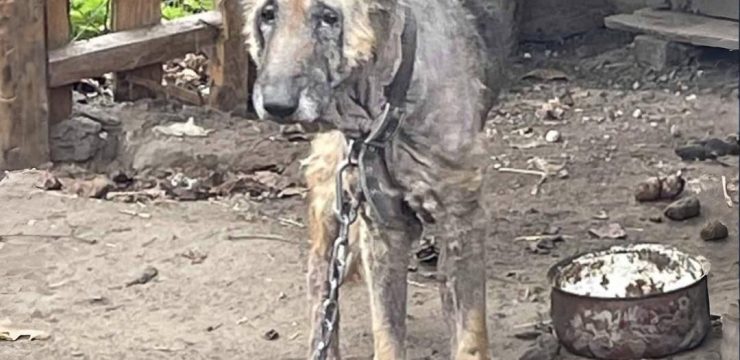When we think of dangerous foods, we often picture exotic dishes or strange delicacies, but the truth is some everyday foods we consume without a second thought can actually be lethal if handled incorrectly. Nature has a way of balancing nutrition with risk, and some foods carry hidden toxins that, in the wrong circumstances, can cause paralysis, organ failure, or even death.
 Despite these risks, many of these foods remain staples for millions of people worldwide, relying on proper preparation to make them safe. Here’s a closer look at 14 of the world’s deadliest foods and why they demand extra caution. Cassava, also known as yuca, is a vital carbohydrate source for millions in tropical regions, but it contains cyanogenic glycosides that release cyanide when digested. Without proper soaking, fermenting, or thorough cooking, eating cassava can lead to goiters, paralysis, or even death. It is estimated that poorly prepared cassava claims over 200 lives each year, yet its ability to thrive in poor soil makes it a survival food for many communities. Similarly, starfruit seems harmless at first glance, but for people with kidney disease, it’s a silent killer. The fruit contains neurotoxins that healthy kidneys can filter, but those with impaired function risk seizures, confusion, and even death from just a small serving. Cooking does nothing to remove these toxins, making avoidance the only safe choice for those at risk. Cherry pits, often discarded without a thought, hide amygdalin, a compound that turns into cyanide in the body. Accidentally chewing or crushing several pits can trigger headaches, dizziness, and in large quantities, life-threatening poisoning. While swallowing whole pits usually isn’t harmful, breaking them open exposes their toxic contents. Green potatoes, another kitchen staple, can become dangerous when exposed to sunlight, turning their skin green and increasing levels of solanine. This natural toxin can cause nausea, confusion, and even paralysis. Cooking won’t destroy it, so the safest move is to discard any potato that’s turned green or sprouted. In Japan, pufferfish, or fugu, is both a luxury and a gamble. This delicacy contains tetrodotoxin, a poison that can paralyze muscles and cause respiratory failure within minutes. Preparing fugu is an art that takes years of training, yet even experts make mistakes. Dozens of people fall ill each year from improperly prepared pufferfish, with some cases proving fatal. Raw cashews may seem safe, but straight from the tree, they contain urushiol, the same irritant found in poison ivy. Eating unprocessed cashews can lead to severe allergic reactions, blisters, and internal swelling. Commercial cashews are steamed to remove this toxin before they ever reach store shelves. Bitter almonds are another nut that hides danger. Packed with amygdalin, just a handful can release enough cyanide to cause breathing problems or death, especially in children. These almonds must undergo special processing before they’re safe to eat, highlighting that not all almonds are created equal. Apple seeds carry the same amygdalin compound found in cherry pits. Eating a few seeds won’t harm most people, but in large amounts, they can be toxic, leading to nausea, dizziness, and breathing difficulties. Swallowing whole seeds generally poses little risk, but crushing or chewing them is where danger begins. Nutmeg is a beloved spice in holiday treats, yet consuming large amounts can lead to hallucinations, rapid heartbeat, seizures, and even hospitalization. Its compound, myristicin, affects the nervous system, making this common kitchen ingredient one of the world’s most deceptive dangers when overused. Wild mushrooms are notoriously risky. Deadly varieties like the death cap or destroying angel can cause irreversible organ damage or death, even in small amounts. False morels contain gyromitrin, another toxic compound. The challenge is that poisonous mushrooms often look like edible ones, and even experienced foragers can make fatal mistakes. When in doubt, store-bought mushrooms are the safer option. Mangoes, despite their sweet, tropical flavor, have a hidden threat. Their sap, peel, and leaves contain urushiol, the same toxin found in poison ivy and raw cashews. Handling unwashed mangoes or eating the peel can cause rashes, itching, swelling, and breathing difficulties for those allergic to urushiol. Elderberries are often used in jams, syrups, and teas, but raw elderberries, along with their seeds, stems, and leaves, contain cyanogenic compounds that can cause nausea, dizziness, and stomach cramps. Cooking destroys these toxins, making preparation key to safe consumption. Rhubarb leaves are another unexpected danger. While the stalks are safe and widely used in desserts, the leaves contain oxalic acid, which in large amounts can lead to kidney failure, breathing problems, or death. No amount of cooking can make them safe to eat. Raw kidney beans contain phytohaemagglutinin, a toxin that can cause severe food poisoning with just a few beans. Slow cooking at low heat makes the toxin even stronger, but boiling them vigorously for at least 10 minutes destroys it, turning them into a healthy and nutritious food source. These foods serve as a stark reminder that nature’s pantry isn’t always safe without knowledge and preparation. While many of them are staples or even delicacies worldwide, mishandling or consuming them raw can turn a meal into a medical emergency. Knowing the risks and proper preparation methods is essential, because when it comes to these deadly foods, the line between nourishment and poison is thinner than you might think.
Despite these risks, many of these foods remain staples for millions of people worldwide, relying on proper preparation to make them safe. Here’s a closer look at 14 of the world’s deadliest foods and why they demand extra caution. Cassava, also known as yuca, is a vital carbohydrate source for millions in tropical regions, but it contains cyanogenic glycosides that release cyanide when digested. Without proper soaking, fermenting, or thorough cooking, eating cassava can lead to goiters, paralysis, or even death. It is estimated that poorly prepared cassava claims over 200 lives each year, yet its ability to thrive in poor soil makes it a survival food for many communities. Similarly, starfruit seems harmless at first glance, but for people with kidney disease, it’s a silent killer. The fruit contains neurotoxins that healthy kidneys can filter, but those with impaired function risk seizures, confusion, and even death from just a small serving. Cooking does nothing to remove these toxins, making avoidance the only safe choice for those at risk. Cherry pits, often discarded without a thought, hide amygdalin, a compound that turns into cyanide in the body. Accidentally chewing or crushing several pits can trigger headaches, dizziness, and in large quantities, life-threatening poisoning. While swallowing whole pits usually isn’t harmful, breaking them open exposes their toxic contents. Green potatoes, another kitchen staple, can become dangerous when exposed to sunlight, turning their skin green and increasing levels of solanine. This natural toxin can cause nausea, confusion, and even paralysis. Cooking won’t destroy it, so the safest move is to discard any potato that’s turned green or sprouted. In Japan, pufferfish, or fugu, is both a luxury and a gamble. This delicacy contains tetrodotoxin, a poison that can paralyze muscles and cause respiratory failure within minutes. Preparing fugu is an art that takes years of training, yet even experts make mistakes. Dozens of people fall ill each year from improperly prepared pufferfish, with some cases proving fatal. Raw cashews may seem safe, but straight from the tree, they contain urushiol, the same irritant found in poison ivy. Eating unprocessed cashews can lead to severe allergic reactions, blisters, and internal swelling. Commercial cashews are steamed to remove this toxin before they ever reach store shelves. Bitter almonds are another nut that hides danger. Packed with amygdalin, just a handful can release enough cyanide to cause breathing problems or death, especially in children. These almonds must undergo special processing before they’re safe to eat, highlighting that not all almonds are created equal. Apple seeds carry the same amygdalin compound found in cherry pits. Eating a few seeds won’t harm most people, but in large amounts, they can be toxic, leading to nausea, dizziness, and breathing difficulties. Swallowing whole seeds generally poses little risk, but crushing or chewing them is where danger begins. Nutmeg is a beloved spice in holiday treats, yet consuming large amounts can lead to hallucinations, rapid heartbeat, seizures, and even hospitalization. Its compound, myristicin, affects the nervous system, making this common kitchen ingredient one of the world’s most deceptive dangers when overused. Wild mushrooms are notoriously risky. Deadly varieties like the death cap or destroying angel can cause irreversible organ damage or death, even in small amounts. False morels contain gyromitrin, another toxic compound. The challenge is that poisonous mushrooms often look like edible ones, and even experienced foragers can make fatal mistakes. When in doubt, store-bought mushrooms are the safer option. Mangoes, despite their sweet, tropical flavor, have a hidden threat. Their sap, peel, and leaves contain urushiol, the same toxin found in poison ivy and raw cashews. Handling unwashed mangoes or eating the peel can cause rashes, itching, swelling, and breathing difficulties for those allergic to urushiol. Elderberries are often used in jams, syrups, and teas, but raw elderberries, along with their seeds, stems, and leaves, contain cyanogenic compounds that can cause nausea, dizziness, and stomach cramps. Cooking destroys these toxins, making preparation key to safe consumption. Rhubarb leaves are another unexpected danger. While the stalks are safe and widely used in desserts, the leaves contain oxalic acid, which in large amounts can lead to kidney failure, breathing problems, or death. No amount of cooking can make them safe to eat. Raw kidney beans contain phytohaemagglutinin, a toxin that can cause severe food poisoning with just a few beans. Slow cooking at low heat makes the toxin even stronger, but boiling them vigorously for at least 10 minutes destroys it, turning them into a healthy and nutritious food source. These foods serve as a stark reminder that nature’s pantry isn’t always safe without knowledge and preparation. While many of them are staples or even delicacies worldwide, mishandling or consuming them raw can turn a meal into a medical emergency. Knowing the risks and proper preparation methods is essential, because when it comes to these deadly foods, the line between nourishment and poison is thinner than you might think.





